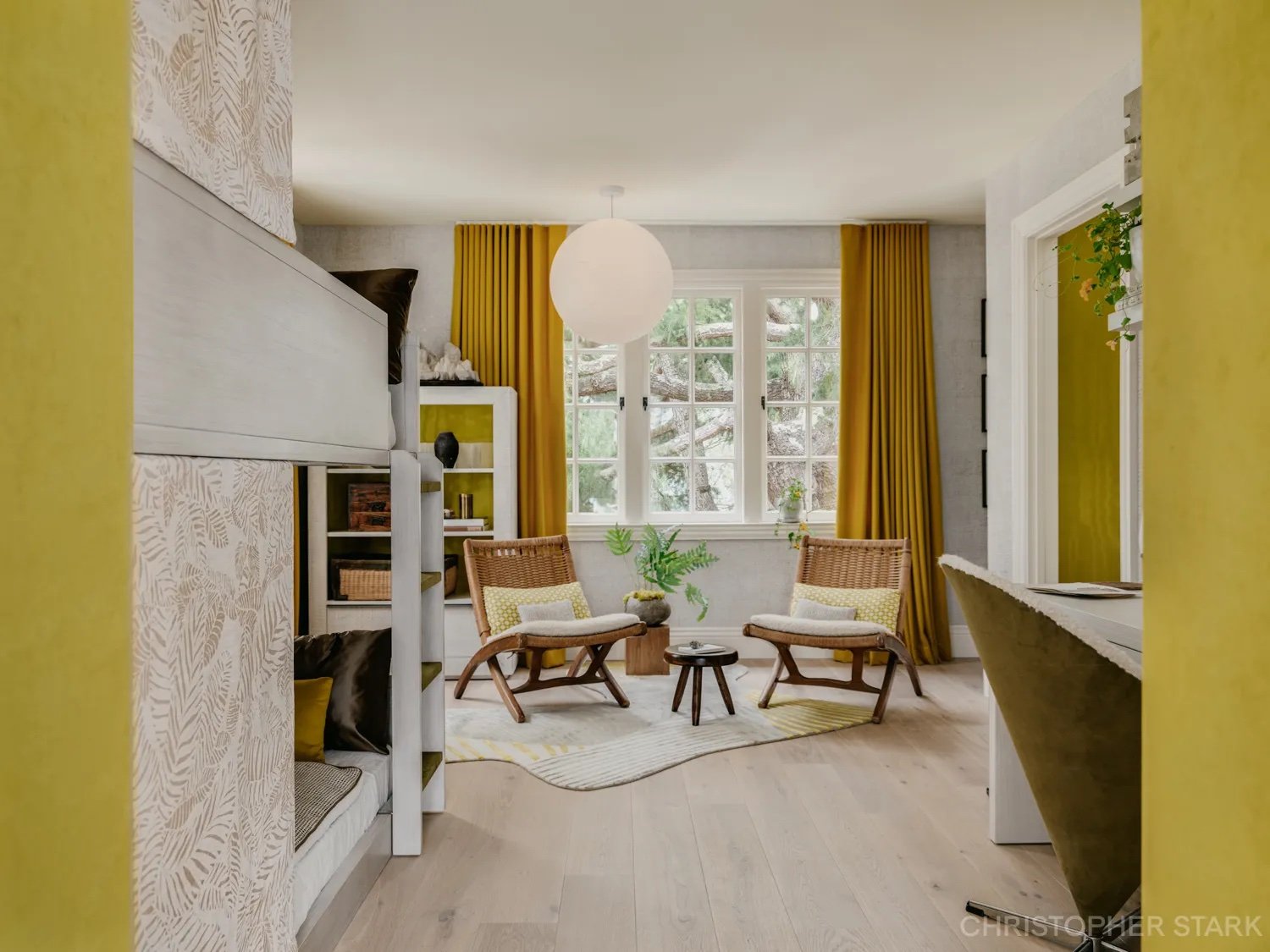Need to Know
Is the Gendered Children’s Room Finally Done?
The pink-and-blue trend that emerged during the 1940s is on the outs—again. Will it fade out for good?
December 4, 2020
Two hues were notably absent from the children’s room Sean Leffers’s created for this year’s San Francisco Decorators Showcase house: pink and blue. Instead, the space—adorned with C&C Milano bedding, Dedar and Holly Hunt wall coverings, Schumacher fabric for the drapes, and Hans Wegner folding chairs—was a refined composition of greens and yellows. “We imagined an introspective child, drawn to nature, art, and reading. So we created cozy places to draw and read, as well as plenty of storage for art supplies and books. The color palette,” explains Leffers, “came from a beautiful old pine tree covered in chartreuse-colored lichens that can be seen from the window.”
That natural, sophisticated theme signifies a departure from the gendered colors favored, historically, for many children’s rooms—as well as the hues of choice for so much mass-market kid’s furniture and the over-the-top gender reveal parties crowding social media feeds. But, in and out of popularity throughout the last century, it’s a color distinction that seems to be increasingly passé as clients and society alike question more deeply than ever before the limits of traditionally gendered hues.
“Many of us are way more conscious about gender nonconformity issues than even just a few years ago,” says Leffers. “It feels very natural to me to give kids space to be who they are and to avoid conventionally gendered design choices when they aren’t aligned with a child’s self-expression. The awareness around this is evolving, and something everyone who designs for kids should be talking about.”
The persistent pink-or-blue theme has its origins in the mid-19th century—and its popularity has fluctuated with the times. Alexis Barr, a professor at New York School of Interior Design who teaches design history and humanities, says the gendering of the two colors grew out of fashion in Europe and the United States; in its early days, it “was done in a limited way: furnishings, clothing, and textiles were expensive and were expected to be used for multiple children, even in wealthy households. In Louisa May Alcott’s Little Women, the always-chic Amy adds pink and blue ribbons to the clothes of her sister’s girl-boy twins, declaring it’s the ‘French fashion’ to do so. But nurseries and children’s rooms were not decorated according to gender at this point.”
In fact, the first-ever interior decoration book, Edith Wharton and Ogden Codman Jr.’s The Decoration of Houses (1897), says Barr, “devotes 10 pages to the decoration of children’s rooms but never mentions gender as a determining factor—it advises that these rooms be simple and ‘cheerful,’ and, above all, that these interiors demonstrate the tenets of ‘good taste’ to impressionable children. Wharton and Codman write a lot about other rooms in the house as spaces to be decorated for men or for women, and the pros and cons of these choices, but it is not part of the conversation for children’s interiors.”


